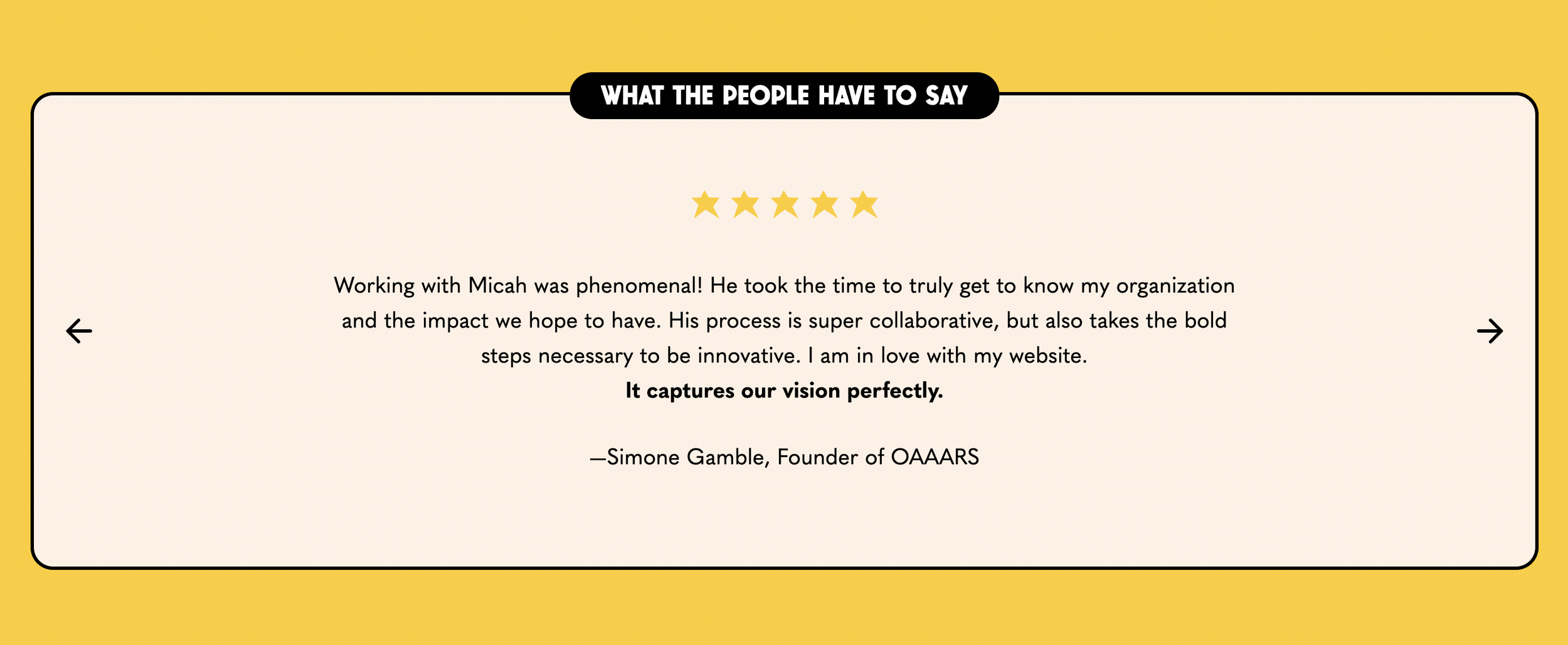5 Elements to Include in Your Freelance Portfolio to Attract Clients
A portfolio is essential for every freelancer running their own business.
Your portfolio is the first thing a potential client or collaborator will check out when they want to get to know your work and see if they could be a good fit. That means if you want to capture their interest and gain their trust, there are a few elements your portfolio needs to include.
Whether you’re just getting started or your portfolio could just use a refresh, here are the must-have elements your freelance portfolio needs to attract clients, plus some real-life inspiration using expert’s website examples in website design, copywriting, branding, and creative agency work.
What is a Freelance Portfolio?
A freelance portfolio is a place for you to showcase your work and services for potential clients to see. Whether you have a standalone portfolio or you include it on your freelance website, your portfolio is an opportunity to give clients a preview of what you do and how you do it.
Here are a few websites where you can create your own portfolio:
Dribbble: A portfolio website for creative work where you can showcase your work and share feedback with other creatives.
Behance: For design, photography, illustration, and other visual portfolios.
Clippings.me: A free online writing portfolio for freelance bloggers, journalists, and writers to curate and showcase articles and content.
You can also create your own freelance portfolio by creating a website. A few platforms to create your freelance website include Squarespace, Wix, WordPress, and Webflow.
What to Include in Your Freelance Portfolio
As you start putting together your portfolio or website, there are a few must-haves to keep top of mind if you want to convince clients to reach out or book you. Below, let’s review the elements you should include on your freelance website.
1. Past work examples
One of the first things a potential client wants to see when they visit your portfolio website is the work you’ve done. It helps them imagine what you could do for them, whether you design websites, write copy, or develop brands.
Think of your portfolio as a resume. It should outline the major roles or projects you’ve worked on, showcase your skills, and emphasize the results you’ve generated.
When sharing your past projects, the key is to share the highlights. Share the projects or clients you’re most proud of. There’s no need to share everything you’ve ever worked on throughout your career because you don’t want to give visitors *too* much to scroll through. Instead, give people a high-level look at your work.
One last thing to keep in mind when selecting which work to showcase on your portfolio website is to only share the types of projects or clients you currently focus on or want to work with.
For example, let’s say you’re a freelance copywriter and you’ve written a lot of email copy in the past but now you want to focus on landing pages. Your portfolio should then showcase the landing pages you’ve worked on rather than email newsletters you may have done in the past if that’s not the type of work you want to focus on anymore.
2. Clear services
Clearly defined services can make or break your freelance website.
When potential clients find your portfolio, they need to know how you can help them. If that isn’t clear from the start, then there’s a good chance they’ll close that tab and move on to the next website.
List each service you offer and include a few details about why someone may be looking for this service. You can also dedicate an entire page to each service to provide even more context and examples and give potential clients a full picture of what you offer. Need inspiration? Check out Wethos proposal and service templates with prices to start.
3. Compelling case studies
If you want to give prospective clients even more of a reason to book you, put together a case study or two to showcase in your portfolio.
A case study tells the story of a client engagement by outlining a specific challenge your client had and the solution you created to solve it. The typical case study framework includes:
Background
Challenge
Solution
Results
Case studies are a great way to demonstrate the results you help clients achieve using your unique approach and expertise.
For example, if you helped redesign a client’s website to improve UX, increase traffic, and improve conversions, then a case study would share how you did it and emphasize the results your client saw due to the redesign. Similarly, if you worked on creating high-converting landing pages for a client, then create a case study that demonstrates the real results your landing page secured.
4. Client testimonials
Similar to referrals when you’re job searching, testimonials can go a long way in boosting your social proof and credibility.
Hearing what other people have to say about your work and process can give potential clients more insight into what it’s like working with you.
As a best practice, ask for a testimonial as you wrap up every client project. Asking for one right after a project — versus months later — ensures your work is fresh in the client’s mind and they can provide a detailed and accurate testimonial.
5. About page
While your freelance portfolio’s primary function is to showcase your skills, expertise, and past work, clients will also want to learn more about you. Don’t forget to include an About page in your portfolio website.
Your About page should include quick a summary of your background as well as an elevator pitch that describes what you do and who you do it for. And don’t forget to include a fun fact or two! You are the face of your freelance business, after all — clients want to get to know the person behind the business.
4 Portfolio Website Examples
To give you some inspiration for your portfolio, here are a few real-life website examples.
1. Website design studio example: OK Micah
OK Micah’s website provides an excellent example of how to showcase past work examples. The brand and web design studio led by Micah Woods uses the portfolio page on its website to share client projects that represent the type of work they create.
The studio’s portfolio also does a great job of providing context. The “How We Did It” section helps potential clients better understand their approach, style, and expertise.
OK Micah’s website also offers a great example of how to incorporate client testimonials. As we mentioned earlier, testimonials and reviews help create social proof and trust between you and potential clients. The testimonial slider on OK Micah’s website is an engaging way to display what clients have said about working with you.
2. Brand consultant example: The Brand Doula
Another great website example is The Brand Doula’s website. The brand development studio, founded by Lola Adewuya, offers a few curated services that are clearly outlined on its website.
There’s no question about what the studio offers. Its services page outlines the type of service and what’s included in the engagement, as well as details about who the service is best for and what the starting price is.
3. Creative agency example: Morr Agency
If you need inspiration for how to effectively include case studies, look to Morr Agency’s website. The agency, founded by Demetri Morris, clearly presents multiple case studies on its website. Each case study outlines the client’s problem, MORR’s services and solution, and the real results generated from their work.
4. Copywriter & editing example: Melissa Yap
Looking for a good About page example? Take a few notes from copywriter Melissa Yap. Melissa includes a few paragraphs that provide readers with more details about her work experience, where her work has been featured, and a few links to featured press about her.
Your portfolio is your opportunity to capture a potential client’s attention, tell them what can do for them, showcase your best work, and give them a sense of what it would like to work with you. A strong portfolio is a tool to grow your business — so use it wisely as you scale.
Looking for more tools to build and streamline your business?






